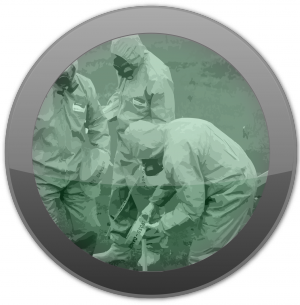Environmental Site Risks

What You Need to Know
Phase 1 ESAs should be performed which meet the requirements of ASTM 1527-05 to ensure CERCLA liability protection
Phase 1 ESAs consist of Records Reviews, Site Reconnaissance, Interviews, and a Report of Findings
Phase 1 ESAs not only examine the site at issue but surrounding sites/properties/business that may have impacted the site at issue
Phase 1 ESAs are environmental studies and not structural and therefore do not typically include (unless specifically requested) items such as asbestos, lead based paint, mold, indoor air quality issues, etc.
What You Need to Do
Consideration should be given to performing a Phase 1 ESA when buying or selling a commercial property and/or when financing the property or when there is a proposed change of use
Request copies of prior Phase 1s when available to bring awareness to past issues identified on the site
Carefully read the entire completed Phase 1 ESA for any potential issues identified and validate qualifications of performing parties
Myths and Misconceptions
The typical Phase 1 ESA is required to identify issues such as asbestos and lead based paint-FALSE
Phase 1 ESAs performed to ASTM standards have validity lasting at least 5 years-FALSE
Transaction Screens provide protection under CERCLA for recognized environmental conditions similar to Phase 1’s-FALSE
Most states have strict requirements with respect to the qualifications of individuals performing Phase 1’s-FALSE
Expert Services:
Insurance
Claims: Prevention and Response
- Site Investigations/Inspections
- Loss Mitigation Protocol Development
- Creative Scope of Work Development
- Project Oversight
- Environmental Sampling
- Cause and Origin Investigation
- Emergency Response
- Client Interface
- Communication/Alert Development
- Liability Exposure Minimization
- Expert Consultation
Underwriting: New Product Development and Risk Assessment
- New and Emerging Risk Education-Focus on New Areas of Coverage Opportunity
- New and Emerging Product/Technology Applicability to Underwriting Coverage
- Recommendations for Coverage Expansion Based on Risk Minimization Strategies
- Policy Language Review/Development Based on Industry Specific Issues
Due Diligence: Investigation, Auditing, Verification and Risk Assessment
- Project Oversight Ensuring Compliance with Policy Coverage
- Immediate Communication re Project Issues Impacting Policies
- Detailed Reports of Project Findings/Oversight with Recommendations
- Cost Estimate Development Based on Construction/Remediation Options
- Phone Surveys/Desktop Reviews Focusing on Issues of Potential Concern
Remediation Cost Auditing and Risk Quantification
- Review/Audit of Contractor Invoices
- Scope of Work Performed Analysis (Best Practices, Regulatory Compliance)
Expert Testimony
- Environmental Risk
- Healthcare Risk
Education and Training: Claims and Underwriting
- Seminars/Webinars on Environmental/Healthcare Issues Focusing on Claims/Underwriting Risk
- Seminars/Webinars on Emerging Issues and Policy Impact as well as Coverage Expansion Opportunities
- White Paper Development
Insurance Toolkits: Claims and Underwriting
- Development of Underwriting Applications for Healthcare/Environmental Risk
- Development of Value Added Risk Management Checklists/Protocols for Insureds
- Operations and Maintenance Programs for Water Intrusion Risk Management, Asbestos, Lead Based Paint
- Hazard Assessment Critical Control Point Programs (HACCP)
Insurance Risk Alert Service
- Development of Insured Alert Communications re Emergency Healthcare/Environmental Risk
- Development of Employee Alert Communications re Emergency Healthcare/Environmental Risk

